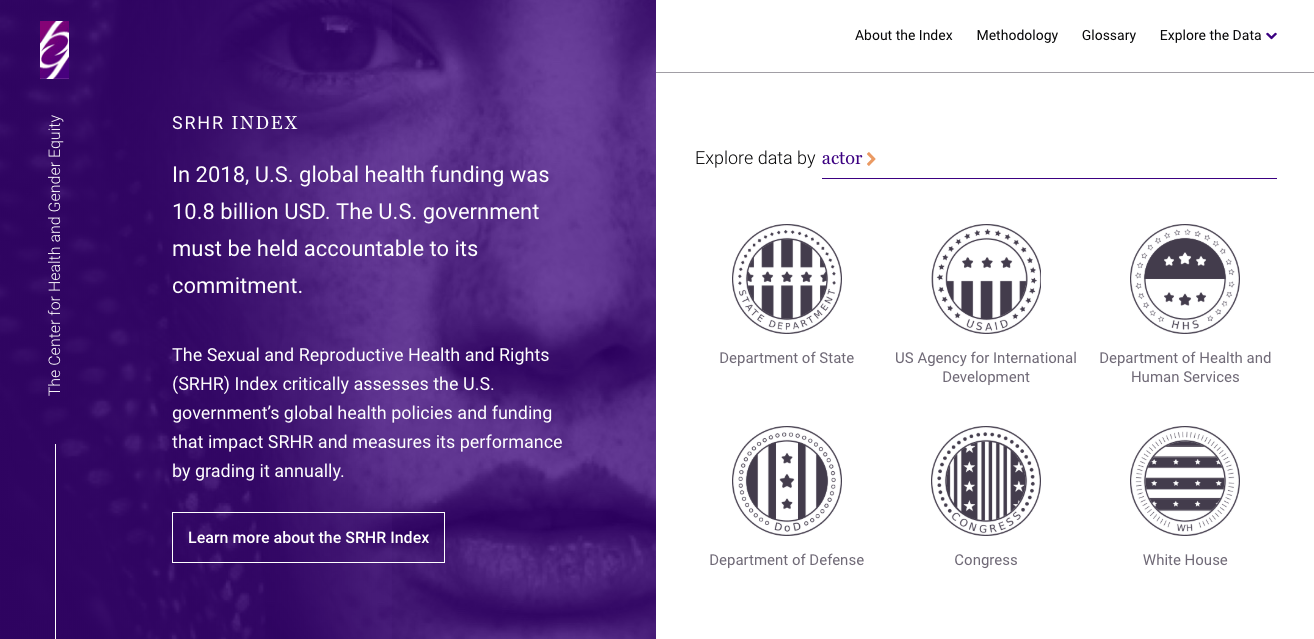Blog • Insights
Is a Decoupled CMS Right for You?
“Decoupled” or “headless” CMS architectures are generating a lot buzz, and for good reason, as they offer a lot of benefits and can simplify the day-to-day management of a website. Let’s take a look at some reasons you may want to consider, or not consider, moving towards a decoupled model for your next web project.
Last month, Forum One completed its first-ever fully decoupled CMS with the successful launch of the Sexual and Reproductive Health and Rights Index, an initiative of the Center for Health and Gender Equity (CHANGE). Over the course of the digital project, we learned a lot about what it takes to build a decoupled application, including the pros and cons that this architecture can have for an organization’s overall digital communications strategy.About the Sexual and Reproductive Health and Rights Index Project
The Sexual and Reproductive Health and Rights Index aims to assess the U.S. government’s work on sexual and reproductive health and rights and communicate its findings to the public. It does this by performing an annual assessment of government agencies and health funding streams related to Sexual and Reproductive Health and Rights, and awards grades (from A+ to F) based on commitments, leadership, funding levels, and actions. The topic and content are complex, and our challenge was, therefore, to present both in an intuitive and engaging manner. The Sexual Reproductive Health and Rights (SRHR) Index homepage.
The organization needed the ability to manage its content, so we selected WordPress to serve as the content management system (CMS). Early on, we made the decision that the site’s “front-end,” or public facing user interface, should function as an application. We wanted it to be interactive and performant, and we wanted to enhance the user experience by implementing complex transitions and animations. This required complete flexibility for layout and design, and it led us to the decision to bypass WordPress’s rendering system and write our own using the JavaScript framework, React.
The end result had the best of both worlds. We leveraged WordPress’ built-in data, user, and asset management capabilities to avoid having to write and maintain our own. The efficiency we gained allowed us to focus on building a modern, JavaScript-based single-page application with a polished and performant user interface. The project was a success, and we are looking forward to working on more decoupled projects.
The Sexual Reproductive Health and Rights (SRHR) Index homepage.
The organization needed the ability to manage its content, so we selected WordPress to serve as the content management system (CMS). Early on, we made the decision that the site’s “front-end,” or public facing user interface, should function as an application. We wanted it to be interactive and performant, and we wanted to enhance the user experience by implementing complex transitions and animations. This required complete flexibility for layout and design, and it led us to the decision to bypass WordPress’s rendering system and write our own using the JavaScript framework, React.
The end result had the best of both worlds. We leveraged WordPress’ built-in data, user, and asset management capabilities to avoid having to write and maintain our own. The efficiency we gained allowed us to focus on building a modern, JavaScript-based single-page application with a polished and performant user interface. The project was a success, and we are looking forward to working on more decoupled projects.